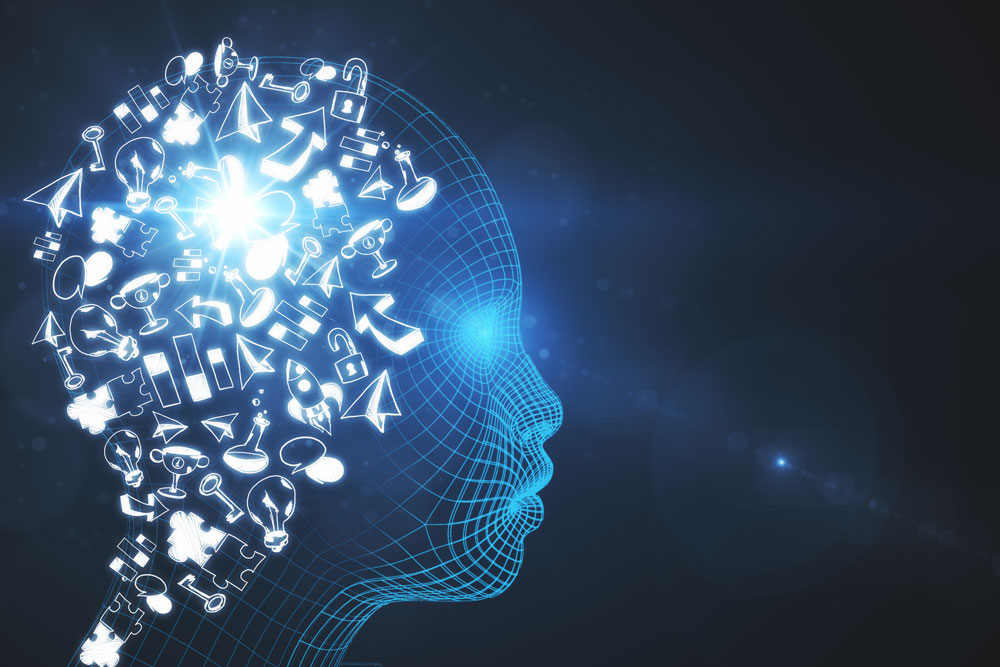When the American Academy of Pediatrics reviewed scientific evidence about non-medical treatments for ADHD, they rated neurofeedback as a Level 1 intervention, indicating it had “Best Support” in scientific research for treatment of ADHD. Their report was made to guide practitioners, educators, youth, and families in developing appropriate plans using psychosocial interventions.
Neurofeedback – which may also be referred to as brain training, biofeedback or electroencephalograph (EEG) – offers patients diagnosed with a variety of psychological and physiological issues a nonmedical way to alleviate their symptoms.
The process involved is described by WebMD, which says, “Electroencephalograph (EEG) sensors are placed on the scalp, often using headgear that looks like a bike helmet. The EEG sensors monitor brainwaves.” Don’t worry – the procedure is painless.
“While your child wears the sensors,” WebMD continues, “he’ll play a computer game that he controls using only his brain. For example, he may make a fish move through the sea while other ocean creatures go by. When the EEG sensors pick up brain waves that show your child is concentrating, they trigger a “reward” signal or sound. For example, a bell may sound, or the fish your child is controlling may dive deep into the water.”
As the website explains, “The idea is that as your child does this, he learns how it feels when he’s concentrating. This might give him more control to ‘create’ brainwaves that can reduce ADHD symptoms.”
“If your child is struggling with ADHD or if you simply want to help them focus better, Neurofeedback is an effective alternative,” Adi Jaffe Ph.D., says on PsychologyToday.com.
The nonprofit organization Children and Adults with Attention-Deficit/Hyperactivity Disorder (CHADD), which provides education, advocacy and support for individuals with ADHD, offers this explanation of neurofeedback for ADHD: “The human brain emits electrical activity in waves that can be measured by a device called an electroencephalograph (EEG). When the results of an EEG measurement are analyzed, scientists are able to identify certain brain wave patterns recorded by the machine.”
This information may seem a little hard to grasp, but stick with us, it will all make sense once you have a grasp of the whole picture. “There are several frequencies of brain waves when we are awake; these are called alpha (medium), beta (fast), and theta (slow) waves,” CHADD continues. “Alpha waves are seen when a person is in a relaxed state, and not actively thinking or interacting with one’s environment. Beta waves are present when a person is interacting with the surrounding environment, and is concentrating, thinking, or solving problems. Theta waves are often seen during times of drowsiness, daydreaming or during light sleep, but can also occur during thoughtless, restless overactivity. (A fourth type of brain wave, called delta, is seen during deep sleep).”
OK, here’s the payoff!
“Neurofeedback, formerly called electroencephalographic (EEG) biofeedback, and occasionally referred to as neurotherapy, is an intervention for ADHD based on findings that many individuals with ADHD show low levels of arousal in frontal brain areas, with excess of theta waves and deficit of beta waves,” CHADD explains.
When you put all of that information together, you come up with the reason why the Sachs Center is proud to offer neurofeedback in NYC. Our approach allows you – or your child – to stimulate those beta waves and turn down the volume on the theta waves that make it hard to concentrate. Basically,neurofeedback for ADHD allows you to train your brain.
WebMD reported that, “Several studies, including a review of five different ones that involved a total of more than 250 children, show that neurofeedback can help with ADHD symptoms.”
Naomi Steiner, MD, a developmental and behavioral pediatrician at Boston Medical Center, studies neurofeedback in children with ADHD and uses it in her pediatric practice, told WebMD, “[During training], your child is forming new neuronal connections — that is, new circuits in the brain. Those circuits improve your child’s ability to ‘switch on’ her brain, and focus for longer periods of time.”
In addition to neurofeedback for ADHD, the Sachs Center offers a full spectrum of services for children, teens and adults on Manhattan’s Upper West Side. Our doctors are specialists in ADD/ADHD testing and ADD/ADHD treatment in NYC. Under the leadership of Dr. George Sachs, we take a holistic, person-centered approach to your care. In other words, we look at the big picture and develop a treatment plan that is tailored to your strengths and weaknesses. You are unique, so we believe a customized solution will be far more effective than a one-size-fits-all approach.
Medication can be very helpful when treating ADD in adults and children. We also offer psychotherapy and social skill groups, as well as valuable coaching on nutrition and organization.
The first step is adult ADD/ADHD testing. If you think you are ready or if you think ADHD treatment in NYC may help your child reach his or her potential, please call us at 646-807-8900 to schedule an initial evaluation.

